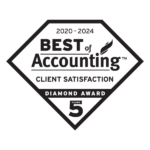Section 529 plans were created in 1996 to help American families manage the cost of education. These accounts allow for tax-deferred growth and tax-free withdrawals for qualified education expenses.
Starting in 2024, Section 529 account owners have a new option for managing excess funds in their accounts. Thanks to the Secure Act 2.0, which was passed in 2022, account owners can now transfer up to $7,000 per year to the beneficiary’s Roth IRA account. This is a great way to use leftover funds without being taxed on the earnings, especially if the beneficiary has completed their education.
However, there are a few important considerations to keep in mind:
- Lifetime Limit: The total amount that can be transferred is capped at $35,000. This means you can make annual transfers of $7,000 for up to five years.
- Earned Income Requirement: The beneficiary must have earned income in the amount of the transfer. For example, if the beneficiary’s earned income in 2024 is $5,200, then the maximum contribution to their Roth IRA is $5,200.
- Direct Transfer: The transfer must be made directly from the Section 529 plan to the Roth IRA account. The account owner cannot receive the funds and then make the contribution themself via check. It has to be a direct trustee-to-trustee transfer.
- Account Age: The Section 529 account must have been open for more than 15 years. Therefore, accounts opened in 2008 or earlier are eligible for these transfers.
- 5-year rule: No fund contributions to a Section 529 plan from the past five years and earnings on those contributions may be rolled over to a Roth IRA.
- Coordination with Other IRA Contributions: If the beneficiary has already made contributions to a traditional or Roth IRA for the year, those contributions take precedence over the amount transferred from the Section 529 account. Therefore, it’s important to coordinate with the beneficiary to ensure that they have not already funded their IRA for the tax year.
By following these guidelines, you can make the most of the excess funds in a Section 529 plan and provide the beneficiary a head start on their retirement savings.
About Schneider Downs Tax Services
Schneider Downs’ tax advisors have experience and expertise in a wide range of industries, including Automotive, Construction, Real Estate, Manufacturing, Energy & Resources, Higher Education, Not-for-profits, Transportation and others. Our industry knowledge and focus ensure the delivery of technical tax strategies that can be implemented as practical business initiatives.
To learn more, visit our dedicated Tax Services page.




